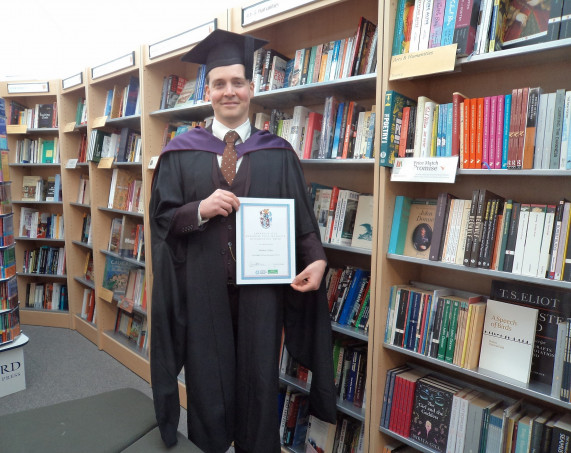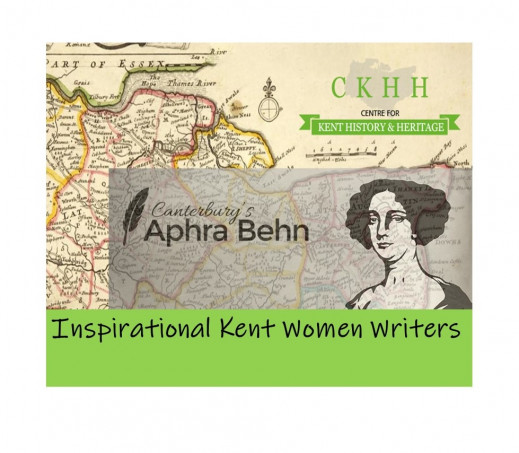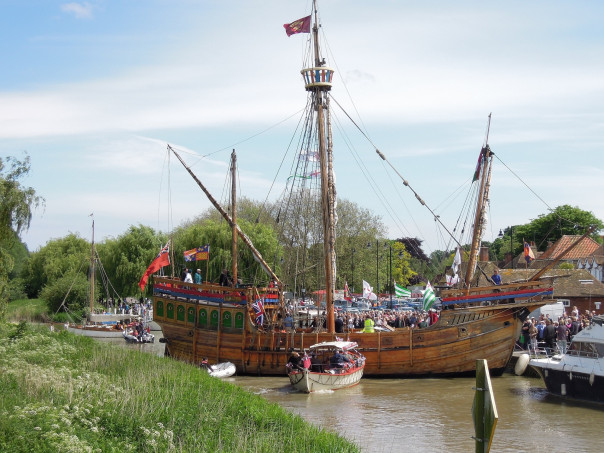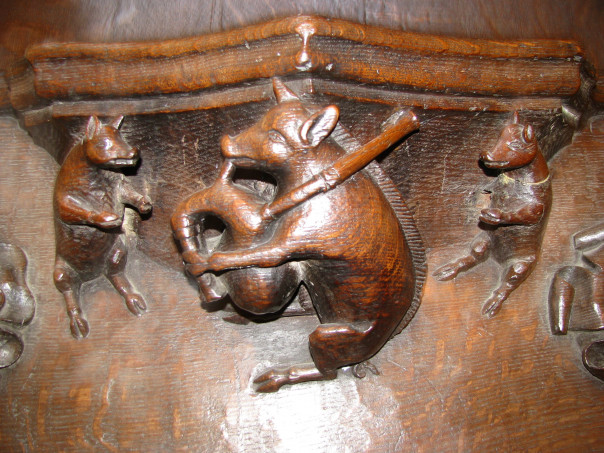As eagle-eyed readers of the CKHH blog will have noticed, this week it is coming out much later than usual. This is because I wanted to lead with the winner of the Lawrence Lyle Memorial Prize.
The prize is awarded for the best Taught MA dissertation across Modern History and MEMS in memory of Lawrence Lyle MBE who made a terrific contribution to history and archaeology in Canterbury (and Kent) over many decades. This was in his professional capacity as Head of History at the Simon Langton Boys School from the time he and his young wife Marjorie arrived in Canterbury in 1955 until his retirement many decades later. Indeed, as the obituary compiled by Anne Chadwick in 2020 highlights, “he is remembered by many former pupils and colleagues as a true gentleman, quietly erudite and notable for his exquisite manners and calm authority.” Moreover, beyond work he was extremely active in the organisation of the then Canterbury Archaeological Society, serving as Hon. Secretary for over a decade and later becoming a Vice-President. He was also one of those instrumental in the establishment of Canterbury Archaeological Trust and he was involved in CAT for many years concerning its management and, with Marjorie, as a very active supporter. Additionally, he was extremely active in the Kent Archaeological Society and Historical Association, as well as being a published author. All of these efforts were recognised in 2013 when he was awarded the MBE for his services to archaeology and local history. As Professor Paul Bennett, the then Director of CAT said at Lawrence’s funeral: “His legacy is indelibly printed in bold letters in the history of the city he served with such sustained distinction.”
Part of this legacy is the annual MA dissertation prize and from the cohort of postgraduate students from 2022-23 it is very fitting that the winner, Matthew Collyer, is currently training to be a teacher, albeit at Simon Langton School for Girls. His MA dissertation entitled ‘The Fuchs Factor, Espionage, the Soviet Atomic Bomb and Anglo-American relations’ and his work during his MA has also meant that he was awarded a distinction, and today (Friday) he graduated at the ceremony in Canterbury Cathedral. However, for the Lawrence Lyle Prize what better backdrop could you have than the CCCU Bookshop’s history section. So many congratulations Matthew!

Now that I have more information about the March events involving CKHH, I thought I would focus on these next. Working in order the first, organised by Dr Claire Bartram and Dr Astrid Stilma as part of the AHRC-funded Aphra Behn project, will be on Saturday 2 March starting at 9.45am. Entitled ‘Inspirational Kent Women Writers’, this day of talks and an exhibition will celebrate the lives and writings of Kent women across the ages. As Claire says, “inspired by Canterbury’s Aphra Behn and in Women’s History Month, we will explore the lives and experiences of Kent women playwrights, novelists, historians and poets from the seventeenth to the twentieth century.” The event will include an exhibition of artefacts from the CCCU Library Special Collections presented in collaboration with the International Centre for Victorian Women Writers led by Professor Carolyn Oulton and Michelle Crowther. This free study day will be in Augustine House and because numbers are limited, please do book at: https://www.canterbury.ac.uk/arts-and-culture/event-details.aspx?instance=442006
Then the following Saturday 9 March, Dr Catriona Cooper will be leading a ‘Workshop: Inspirational Women of Kent’ at the Beaney between 10am and 3pm. This will be a co-creative process, and, as Catriona says, “we’ll identify inspiring Kent women, collect information about them and write their biographies. The result will be a brand new interactive digital exhibition, mapping their lives and work, to share their stories and the places they happened.” Again, the workshop is a free event, but places are limited and booking is required to avoid disappointment. You do not need to have any technical knowledge, just an interest in uncovering and sharing the histories of Kent’s Inspirational Women. For booking: https://www.canterbury.ac.uk/arts-and-culture/event-details.aspx?instance=441806

Moving on to Saturday 23 March and down to Dover, our ‘Migrants, Merchants and Mariners in the Kentish Cinque Ports, c.1400–c.1600’study day at Dover Museum, in conjunction with the Maison Dieu, will be kindly hosted by Jon Iveson and Martin Crowther. It will be a free event starting at 10am and finishing at 4pm comprising talks and our pop-up exhibition, space is limited so please do book: https://www.canterbury.ac.uk/arts-and-culture/event-details.aspx?instance=442606
The schedule in outline: 10am welcome, followed by Dr Craig Lambert on an Introduction to the Kent’s Maritime Communities, c.1400 to c.1600 project; me on Kent as a ‘Gateway County’. After a break, our final talk for the morning will be The Maison Dieu and the Sea by Kieron Hoyle. Lunch follows between noon and 1pm and there are several nearby refreshment outlets because Dover Museum is located in the Market Square, also useful for those seeking coffee etc during the morning and afternoon breaks. The afternoon opens with a talk by Jason Mazzocchi on The Free Fishermen and Dredgermen of Faversham, to be followed by Dr Robert Blackmore speaking on Maritime Trade and Kent’s Ports. We’ll then have a break before Dr Lambert again on Kent’s Ships and Mariners followed by our concluding Roundtable session. Moreover, we’ll be around all day and will be happy to discuss the pop-up exhibition with members of the audience.

Keeping with the maritime theme, a final call for papers (by 31 January) for the ‘Kent Shipbuilding’ conference in the autumn, date to be finalised, organised by Stuart Bligh and the KAS Maritime Kent Steering Group. If you are interested, details are here: https://kentarchaeology.org.uk/events/maritime-kent-conference-2024 and the organisers would be delighted to hear from you.
Moving from ships to dragons, Diane Heath tells me that the Franciscan Gardens ‘Green Dragon’ is coming on well and she with the help of her ‘dragon-wranglers’ have now covered him/her/it in sedum, so the dragon is now indeed green! The head isn’t finished and that’s for next week but nevertheless it is brilliant progress and Diane has promised a picture shortly.

Finally, and keeping with animals, this week the ‘Medieval Pig’ went to the Medieval & Early Modern Studies research seminar at the University of Kent, which was most enjoyable. Although, as one postgraduate member of the audience pointed out, there were no samples this week. For the seminar the previous week had been on the wine trade AND involved free wine to those attending.
As long-standing readers of the blog will know, I have been talking about the medieval pig since 2016, especially concerning its place in the medieval agrarian landscape of Kent and its symbolic use in the same period when depicted as a musician, especially as a bagpipe player. Consequently, it is probably time that these pigs got into print which means I’m delighted to be among Diane’s contributors to the volume from her conference entitled ‘Skin and Bone, Wood and Stone’ at CCCU last year. There are several other contributors from CCCU including Dr David Budgen and Dr Catriona Cooper, and from among the doctoral students Kieron Hoyle, who is working with Martin Crowther (Dover Maison Dieu project), and Jason Mazzocchi.
That’s all for this week and next week I’ll feature the Applied Humanities module.
 Centre for Kent History and Heritage
Centre for Kent History and Heritage Sheila Sweetinburgh
Sheila Sweetinburgh 1888
1888

